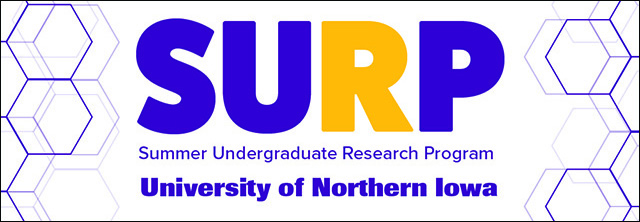
2022 Summer Undergraduate Research Program (SURP) Symposium
Location
ScholarSpace, Rod Library, University of Northern Iowa
Presentation Type
Open Access Poster Presentation
Document Type
poster
Keywords
Plant-pollinator relationships; Bees--Iowa--Genetics;
Abstract
Tracking biological activity in Iowa prairies can prove difficult with such high levels of biodiversity. However, using environmental DNA (eDNA) collected from prairie flowers can provide integral information about the insects that pollinate various plants.
When bees land on flowers, they shed cells and leave trace amounts of their DNA behind. After extracting the DNA from these flowers using the Qiagen DNeasy Extraction method, the samples are then mixed with B10 primer. This primer allows only the bee DNA to be targeted once the samples are put through a Polymerase Chain Reaction (PCR).
The purpose of this study is to help further the familiarity of using eDNA to research pollinators. This method of DNA extraction and analysis is still fairly new, but it’s proven to be successful at providing information about the patterns of pollinators and other insects. Especially since many bees and butterflies are rapidly decreasing in population, being able to figure out the abundance, location, distribution, and feeding habits of different pollinator species can be the difference between survival and extinction.
Start Date
29-7-2022 11:00 AM
End Date
29-7-2022 1:30 PM
Event Host
Summer Undergraduate Research Program, University of Northern Iowa
Faculty Advisor
Ai Wen
Department
Department of Biology
Copyright
©2022 Mila Haynes, Brody Jack and Dr. Ai Wen
File Format
application/pdf
Recommended Citation
Haynes, Mila; Jack, Brody; and Wen, Ai Ph.D., "Using Environmental DNA (eDNA) to Assess Pollinator Communities in Cedar Valley" (2022). Summer Undergraduate Research Program (SURP) Symposium. 6.
https://scholarworks.uni.edu/surp/2022/all/6
Using Environmental DNA (eDNA) to Assess Pollinator Communities in Cedar Valley
ScholarSpace, Rod Library, University of Northern Iowa
Tracking biological activity in Iowa prairies can prove difficult with such high levels of biodiversity. However, using environmental DNA (eDNA) collected from prairie flowers can provide integral information about the insects that pollinate various plants.
When bees land on flowers, they shed cells and leave trace amounts of their DNA behind. After extracting the DNA from these flowers using the Qiagen DNeasy Extraction method, the samples are then mixed with B10 primer. This primer allows only the bee DNA to be targeted once the samples are put through a Polymerase Chain Reaction (PCR).
The purpose of this study is to help further the familiarity of using eDNA to research pollinators. This method of DNA extraction and analysis is still fairly new, but it’s proven to be successful at providing information about the patterns of pollinators and other insects. Especially since many bees and butterflies are rapidly decreasing in population, being able to figure out the abundance, location, distribution, and feeding habits of different pollinator species can be the difference between survival and extinction.




Comments
High school participant in UNI's Summer Undergraduate Research Program (SURP) supported by funding from the AEOP High School Apprentice Program.